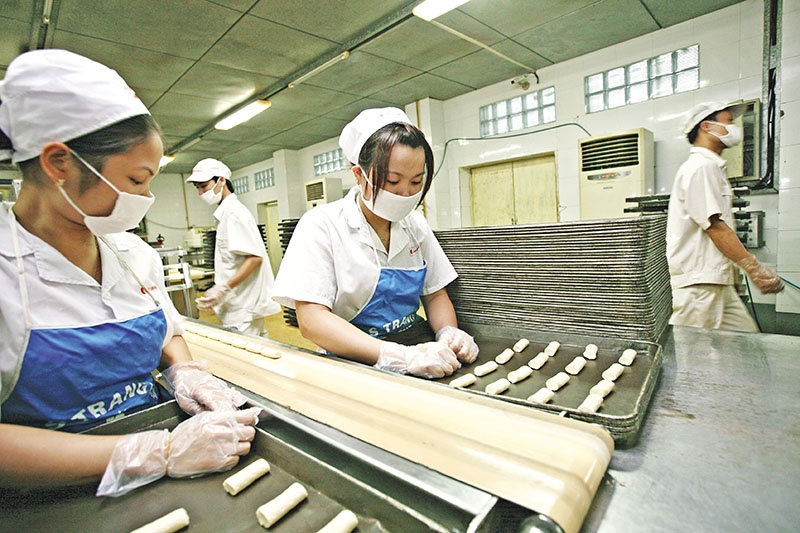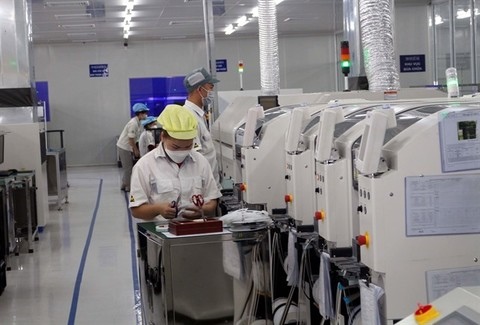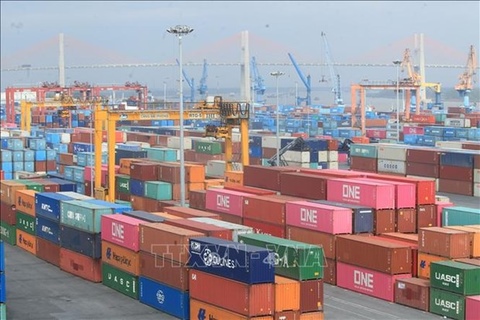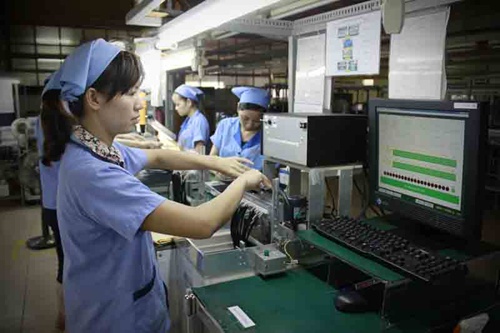Vietnam’s enterprises not yet ready for int’l integration
Vietnam’s enterprises not yet ready for int’l integration
While many businesses are struggling with the question "to be or not to be", enormously important and volatile changes are soon to affect the economy of Vietnam.
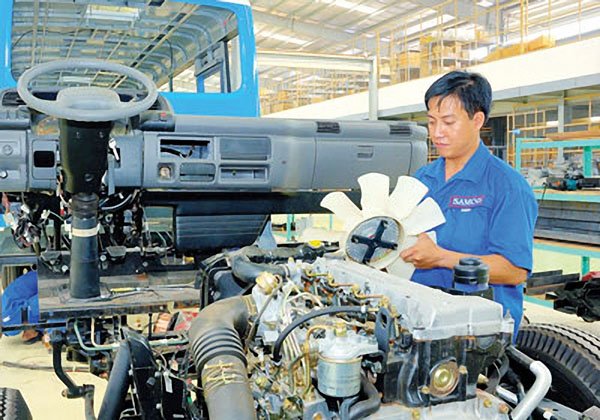
What are these changes? The ASEAN Economic Community (AEC) will begin in less than 12 months and the Trans-Pacific Partnership Agreement (TPP) is in the process of ending negotiations and will possibly signed in 2015.
Vietnam and the Customs Union of Russia, Belarus and Kazakhstan recently reached a consensus on the main content of a free trade agreement between the two sides (VCUFTA). A joint statement on the conclusion of VCUFTA negotiations was issued. The agreement is expected to be signed in early 2015.
Vietnam also finalized negotiation of free trade agreements with the EU and South Korea, under which Vietnam will give incentives and opportunities for import-export.
Will domestic enterprises be able to respond to these changes?
In November 2006, Vietnam officially joined the World Trade Organization (WTO). Local businesses eagerly awaited the biggest move since the country opened its door for integration.
Earlier, the signing of the Vietnam-US bilateral trade agreement (BTA) was considered a tremendous success of Vietnam, which made two-way trade value increase on average by 20%, to $30 billion in 2014.
However, the inspiration with WTO was short, and just in 2007, and then from 2008, local businesses were buffeted by intense storms from the world financial crisis. Hundreds of thousands of enterprises could not withstand the storm and had to leave the game.
While there are many subjective and objective causes of difficulties, the question is whether Vietnamese businesses have asked themselves if they were too optimistic and did they prepare poorly for the new game?
This article intends to arouse the interest of businesses in two upcoming important events: the ASEAN Economic Community (AEC) and the Trans-Pacific Partnership Agreement (TPP).
In another article, we will discuss other events such as the Regional Comprehensive Economic Partnership Agreement (RCEP - including the 10 ASEAN countries and the six countries of Australia, India, China, Japan, South Korea, and New Zealand) and Free Trade Agreement with the EU.
Why TPP and EAC?
The Trans-Pacific Partnership (TPP) Agreement is mentioned a great deal because it is the largest trade agreement in the world. With only 12 participating countries, TPP accounts for 40% of global GDP.
Secondly, this is considered a model of trade agreements in the 21st century with the highest level of integration, not only in trade and investment but also its impact on policies of participating countries.
Joining the WTO was joining an institution, but joining TPP is signing an agreement with very specific terms.
Vietnam missed the opportunity to sign TPP in 2014, but the parties are expected to sign the TPP in the first half of 2015.
The ASEAN Economic Community (AEC) is the closest event to Vietnam, with the deadline set for December 2015. Ten ASEAN countries will become a free economic community with the scale of $2.3 trillion and a population of 600 million. In this community, the flow of goods, services, investment, capital and skilled labor (firstly doctors, dentists, nurses, engineers, architects, accounting, inspectors and tourism workers) will run completely free.
What are Vietnam’s weakness regarding the TPP and EAC?
A special feature of Vietnam, according to the latest ranking of the World Economic Forum (WEF), of the 12 countries participating in the TPP, Vietnam is the country with the lowest competitiveness.
More remarkably, among TPP countries, Vietnam has the lowest ranking of the nature of competitiveness. According to the classification of the World Economic Forum, in the TPP, the seven countries of Japan, Singapore, the USA, Malaysia, Australia, Canada and New Zealand are in the group of countries with innovation-based economic development.
The two countries of Chile and Mexico are the countries with productivity-based economic development. Vietnam and Peru are at the bottom, and are called the countries with economic development based on natural elements.
In the AEC, Vietnam’s competitiveness is not that bad: standing below five countries and above three others. However, looking at the economic scale, the picture is clearer. The group of countries with higher competitiveness than Vietnam account for 89% of GDP of the bloc.
Going deep into the details, we see that Vietnam ranks the lowest in ASEAN for tax expenses (including money and time costs for paying taxes). According to a survey by the World Bank, the time that businesses in Vietnam have to spend for tax payment is 10 times higher than those in Singapore and five times than in Cambodia.
As for marketing and organizational ability, Vietnam ranked 114th and 116th in the world and the lowest among ASEAN countries, even below Laos and Cambodia.
Other important indicators of Vietnam (the ability to attract talent, staff training, confidence to empower subordinates) were also lower than those of both Laos and Cambodia, and was only above Myanmar.
As for the health of the banking system, Vietnam is even lower than Myanmar and ranked at the bottom in ASEAN.
Where will Vietnamese businesses be in the game?
To prepare for the new game of TPP and AEC, businesses of other countries are preparing methodically.
Singapore has strengthened its position as the hub of trade and investment in the community. It was the first country in ASEAN to sign a free trade agreement with the EU. In 2014, Hyundai, the fourth largest car maker in the world, set its strategic manufacturing facility in Malaysia, aimed at TPP and AEC. Mazda - the fourth largest car maker in Japan - has decided to set its strategic manufacturing facility in Thailand, also to eye the AEC. Even in Vietnam, Thailand and the Philippines are actively expanding their retail chains and promoting their brands to pave the way for the conquest of the Vietnamese markets.
Vietnam is in the group of the four least developed countries which are called LCMV (Laos, Cambodia, Myanmar and Vietnam). The three other countries have greatly improved in recent years and have overcome Vietnam in many fields.
In the video clips about the AEC of the ASEAN Secretariat, the image of Singapore is of the information superhighway and financial services, the image of Malaysia is of great infrastructure, of Thailand is of the modern agricultural market and that of Vietnam of hawkers and streets filled with two-wheeled vehicles.
Value-added chain
In the integration process, experts do not just look at the import-export turnover or total foreign investment but other factors.
They consider what FDI has brought to local enterprises. Regarding the technology transfer with FDI, in ASEAN, Vietnam stands above Myanmar only, lower than Laos and Cambodia. It means that compared with other countries, the FDI flow into the country mainly targets cheap labor and natural resources.
For import and export, Vietnam has impressive figures on exports of crude oil, coal, rubber, cassava, coffee, leather and footwear and garments-textiles. However, as for the selling price of a cup of coffee, Vietnam is a coffee producer but earns less than 1% of the income from a cup of coffee. For a pair of shoes or a shirt sold on the market, we are proud of the words "Made in Vietnam" but we also enjoy only around 1% of the value.
The matter of integration is not how many products are sold but the position of Vietnam in the value chain.
Wny are Vietnamese enterprises so indifferent?
The TPP and AEC will have a much larger impact than the BTA in 2001 and WTO in 2006. But why at that time were local businesses and media so eager but now they seem to be indifferent?
Some explain that now Vietnamese businesses are struggling daily to survive so they do not have time to worry about the future. An expert said that many enterprises have not worried because they believe that the government will rescue them.
However, it is clear that Vietnamese businesses are now in a low position and they have invested too little in preparation for the new period. Improving marketing, production, training employees, improving confidence ... these are all of the job of business, not the government.
Hopefully, this warning will not be ignored as the early warnings delivered in 2007 when businesses were excited about the stock market and the real estate sector.
It is hoped that the business community will be startled into paying attention, even though it is getting late.


